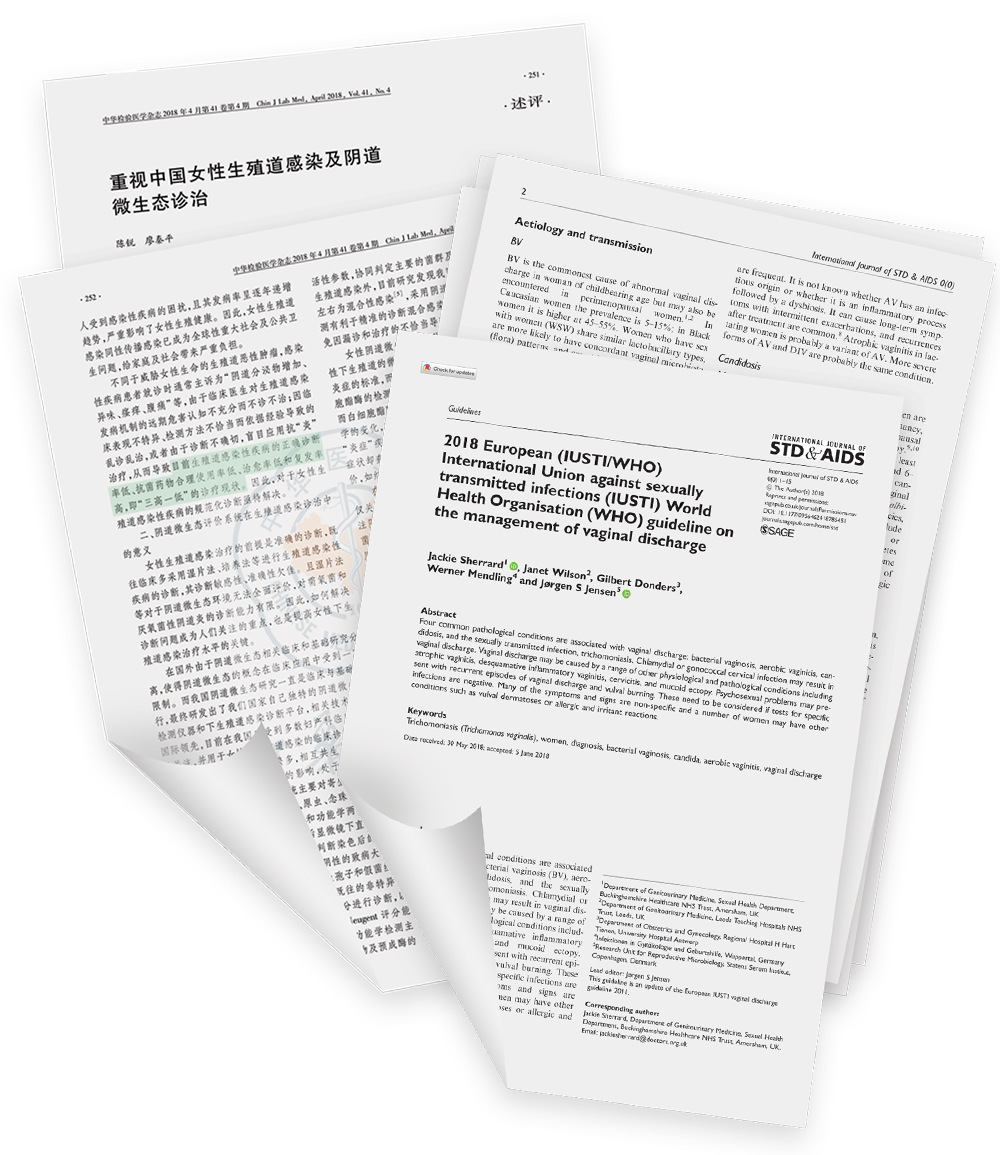02 / 03
2021
IUSTI/WHO Guidelines on the Management of Vaginal Discharge
The 2018 European International Union Against Sexually Transmitted Infections (IUSTI) World Health Organization (WHO) Guidelines
There are 4 common pathological conditions associated with vaginal discharge: bacterial vaginosis (BV), aerobic vaginitis (AV), candidosis, trichomoniasis.
· Recommended current best test to diagnose BV in women is microscopy using the Hay-Ison Criteria. (Strength of recommendation: Grade 1, quality of evidence: Grade A)
o Hay-Ison criteria for microscopy are based on gram-staining but are easier and quicker to use in clinical practice, and take non-BV-associated bacteria into account.
· Recommended current best test to diagnose AV in women is microscopy. (Strength of recommendation: Grade 2, quality of evidence: Grade B)
o The gold standard for diagnosis is wet mount microscopy. The AV score combines information about bacterial flora, epithelial disruption, and inflammation creating a score from 0 to 10: 0–2 (no AV), 3–4 (mild AV), 5–6 (moderate AV), or 7–10 (severe AV)
· Recommended current best test to diagnose candidosis by detection of candida species in women is microscopy. (Strength of recommendation: Grade 1, quality of evidence: Grade B)
o The diagnosis should be based on a combination of the clinical signs and microscopic findings.
· Recommended current best test to diagnose trichomoniasis in women by detection of trichomonas vaginalis are nucleic acid amplification tests (NAATs). (Strength of recommendation: Grade 1, quality of evidence: Grade B)
o Direct observation of the organism by wet mount microscopy (normal saline) or acridine orange stained slide from the posterior vaginal fornix.

Sherrard, J., Wilson, J., Donders, G. et al. 2018 European (IUSTI/WHO) International Union against sexually transmitted infections (IUSTI) World Health Organisation (WHO) guideline on the management of vaginal discharge. Int J STD AIDS. 2018 Nov;29(13):1258-1272.
doi: 10.1177/0956462418785451. Epub 2018 Jul 27.




